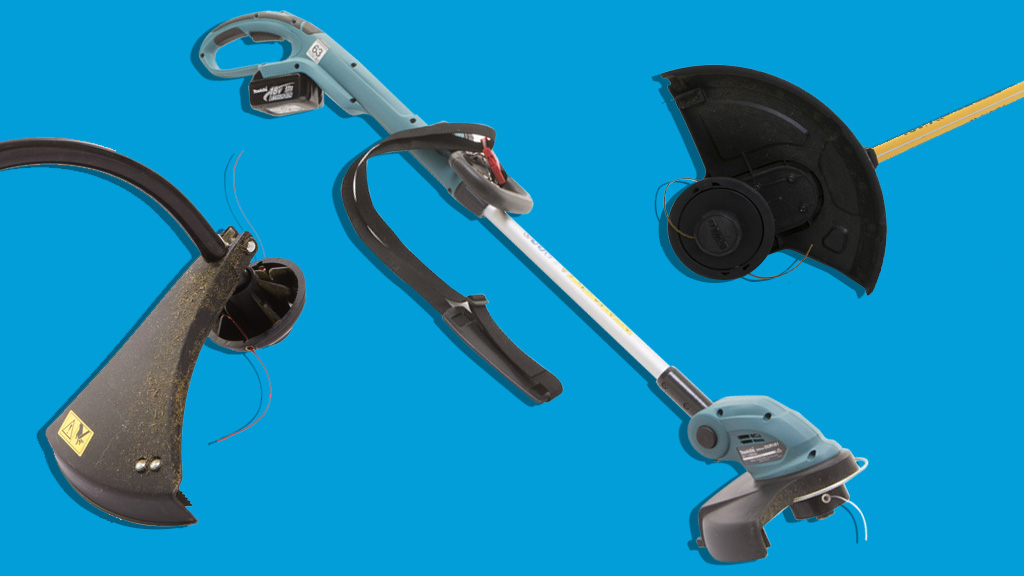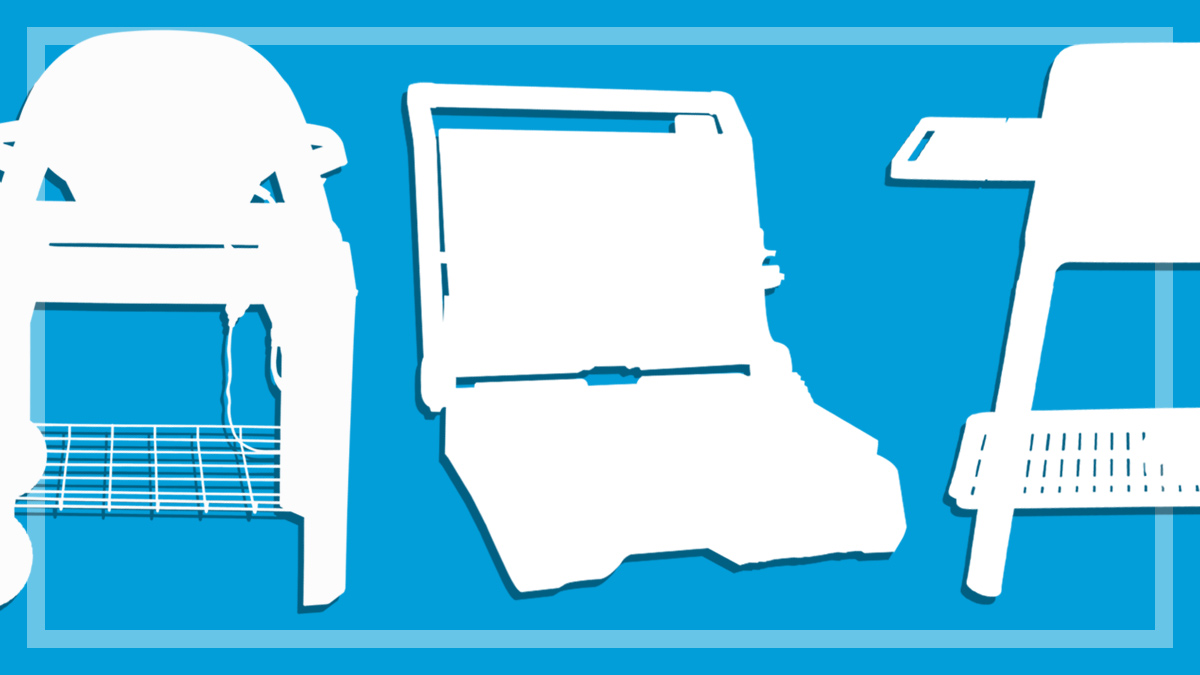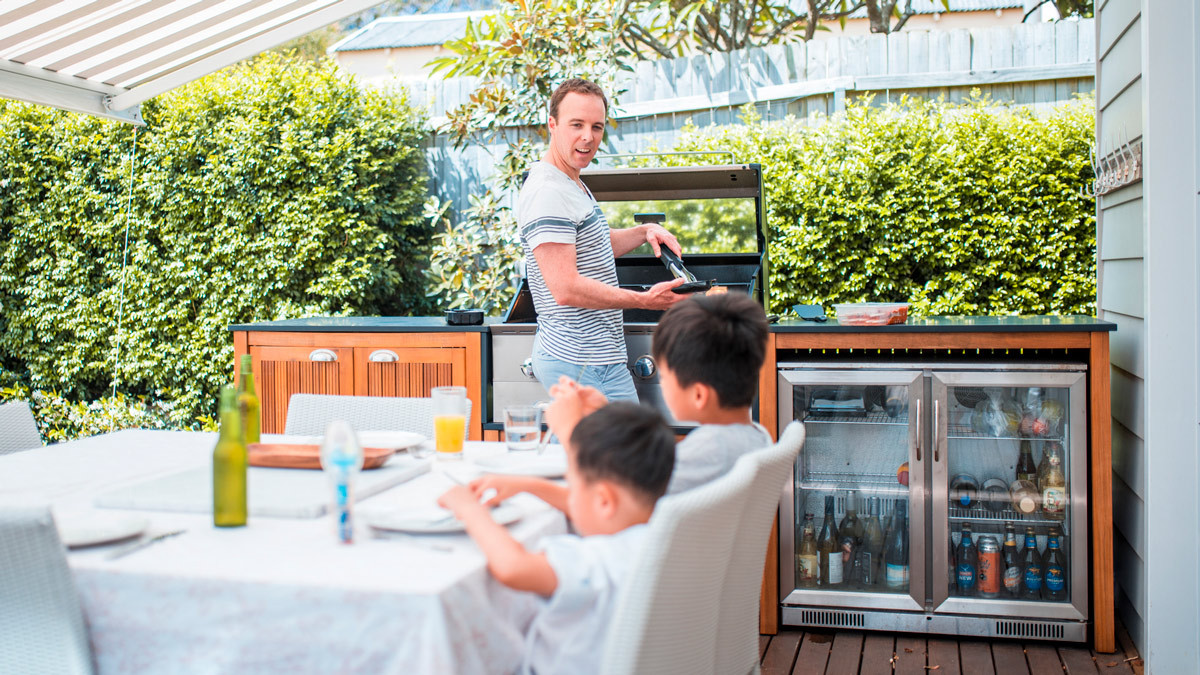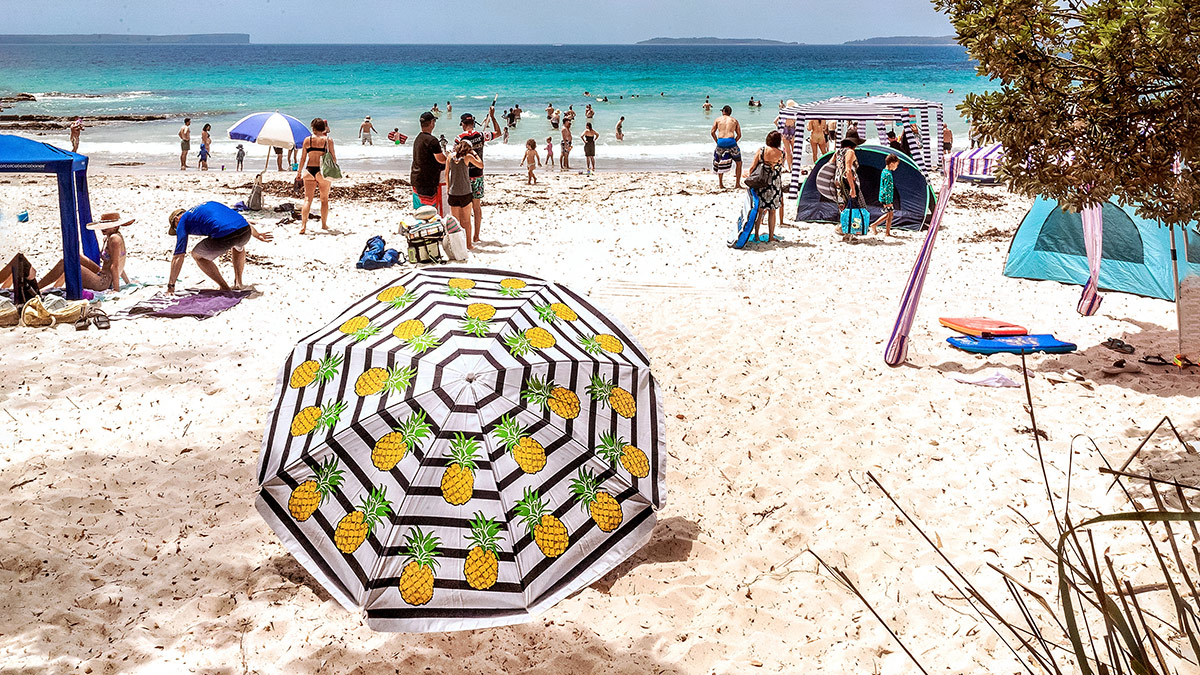Pool maintenance guide
Advice, tips and tricks on cleaning, chlorination and heating.
Last updated: 24 Feb 2020
Pool maintenance can be a drag , but there’s no point having a great pool out the back if it’s full of sludge. Cleaning and maintenance are crucial to keeping the water safe for you and your family, and to make sure you actually get to use it!
On this page:
From collecting leaves and debris to keeping the chlorine levels stable, there’s a huge range of tricks, tools and products to keep your pool in tip top shape.
Cleaning your pool
All pools require cleaning to remove the leaves , dirt and other grotty things that they collect. The kind of cleaner you need will depend on:
- the type of pool – in-ground or above-ground
- the size of your pool
- the amount and type of leaves it collects
- the filtration system and plumbing you have
- your budget.
DIY cleaning
The cheapest option is to do it yourself by ‘hand vacuuming’. The ‘vacuum’ is attached to your skimmer box to create suction and then you manually push the vacuum around the surfaces of your pool with a pole. Typically, this will take between an hour and an hour and a half, and you’ll need to do it once a week.
Employ a pool cleaner
If you prefer to leave the gunk-scooping to someone else, there are plenty of pool-cleaning services around. They’ll also check everything’s operating correctly and do required maintenance. A regular visit may cost around $55 or more. One-off call-outs will be more expensive.
Buy a mechanical pool cleaner
A Kreepy Krauly is a brand of suction pool cleaner, but these days the name ‘creepy crawly’ is often used to describe products in this segment of the market. They’re the cheapest and one of the more popular automatic cleaners. A more expensive type is the pressure cleaner, and more expensive again are the robot cleaners.
Pool chemicals
Without regular sanitisation, all pools develop bacteria – which can pose serious health risks. Water top-ups, leaves, grass, dust, and even people all cause bacteria to grow; these factors, along with the size of your pool, will determine the level of sanitisation you need.
Most pool owners use chlorine. There are other options to keep pool water clean and in balance – such as using ozone gas, UV sterilisation, bromine or ionization – but these methods make up a very small part of the Australian market. Health departments around Australia generally recommend all domestic pool owners have a chlorine residual in their pool.
There are three main ways domestic users can keep their pool chlorinated:
- By hand, which involves adding chlorine manually.
- By installing a salt chlorinator, which produces chlorine and is the most common form of domestic pool chlorination in Australia.
- By installing a liquid chemical feeder, which automatically adds chlorine.
Chemical balance
As well as sanitisation, you also need to chemically balance your pool water. The chemical balance of your pool is made up of:
- pH (acidity/alkalinity level): 68%
- total alkalinity (TA): 16%
- calcium hardness: 16%
You should monitor your chlorine and pH levels at least once a week, or every day if your pool is in high use. Total alkalinity and calcium hardness levels can be monitored less frequently.
Balancing pH
Maintaining the pH level of your pool is crucial to ensuring it’s safe to use. Incorrect pH levels can cause itchy skin and red eyes, and can also reduce the effectiveness of chlorine.
pH ranges from 0 to 14, with 7.0 being neutral, anything above 7.0 alkaline, and anything below 7.0 acidic. The Australian Standard for pool water is 7.0 to 7.8, with 7.4 being ideal.
Rain, water top-ups, people swimming and chlorine will all also alter your pool’s pH. You can raise pH levels by adding soda ash (which is alkaline) or lower them by adding pool acid.
Total alkalinity (TA)
Low levels of total alkalinity will cause erosion to pool surfaces and corrosion of equipment. It can also cause pH levels to become very unstable.
The Australian Standard recommends that your TA level should be 60 to 200 parts per million. You can raise the TA level by adding ‘buffer’ – sodium bicarbonate – or lower it by adding pool acid. Bear in mind, adding acid will also affect your pH levels.
Calcium hardness
Low levels of dissolved calcium in pool water can corrode pool equipment, and high levels can create scale. Calcium hardness levels can’t be monitored using most domestic pool water-testing kits. Instead you need to take a sample of your pool water to your local pool shop for testing. In areas where calcium levels aren’t high, you shouldn’t need to do this test more than once a year – unless you use calcium hypochlorite to sanitise your pool.
Testing kits
There’s a wide range of kits on the market you can use to test your pool water. A basic ‘four-in-one’ test is a good starting point. This kit tests chlorine levels, total alkalinity and pH, as well as the level of acid needed to rebalance the pH. Alternatively, you can now buy electronic testers, which will analyse a disposable strip that you dip in your pool. These strip readers tend to cost more.
Chlorination
Manual chlorination
The most labour-intensive way of keeping your pool sanitised is to manually add chlorine. This involves testing your pool’s water to figure out how much chlorine to use, and will need to be done every second day for the average backyard pool. This might be the best option if you’re renting a property with a pool and aren’t looking for a long-term solution.
Salt chlorinators
Saltwater pools are popular in Australian backyards – but they don’t do away with the need for chlorine. Saltwater pools use salt chlorinators to convert common salt crystals into chlorine gas which is soluble in water.
- You can install a salt chlorinator in the existing pipe work of any pool. The only exception is above-ground pools with metal structures as they’ll rust.
- Some salt chlorinators are self-cleaning. If you don’t buy a self-cleaning model, you will need to manually clean the salt from the cell as often as every fortnight. Self-cleaning models don’t need such intensive maintenance, but they are more expensive.
- When a salt chlorinator is initially installed, you will need to manually add salt to your pool. The recommended initial dose is 4kg of salt per 1000 litres – about 20–30% will be lost every year due to backwashing, splashing and overflow, so regular salt top-ups will be needed.
- Salt chlorinators operate automatically, so you can go on holiday knowing your pool water will remain clean. They are also cost-effective to run and will generally last about five years.
- The capacity of a chlorinator is usually expressed in grams per hour. Some pool suppliers will express a unit’s capacity in terms of its liquid, granular or tablet chlorine equivalent. As a guide, liquid chlorine is about 12–15% chlorine, granular chlorine is about 65% chlorine and tablets can be up to 100% chlorine.
Liquid chemical feeders
Liquid chemical feeders are fitted to your pool’s filtration system and automatically add liquid chlorine, and in some cases acid, to the water.
- The simplest models only inject chlorine into your pool – the amount and frequency will be programmed by you. These units start from around $600.
- More sophisticated models have a sensor probe that automatically tests the chlorine and pH levels of your pool every few minutes, and injects chlorine or acid to keep the water clean and balanced. This means that if 10 people jump in your swimming pool, your pool will automatically up its chlorine level. These models start at around $2000, plus there’ll be the ongoing costs of liquid chlorine and acid.
- Even though the more sophisticated models monitor and adjust pH levels, it’s still recommended that you regularly test the levels yourself.
Pool heating
In cooler climates, heating your pool can give you the opportunity to swim all year round. The best heating choice for you will depend on where you live, your budget, and how you use your pool. An ideal water temperature is said to be around 25°C.
No matter how you heat your pool, a solar/thermal blanket is an excellent way to reduce heat loss overnight. These blankets not only keep the heat in, they also reduce evaporation. For this reason, some state governments offer rebates if you buy one — so find out what’s on offer where you live.
Solar heating
If you live in an area with a lot of sun and you have a large roof area, solar heating is an efficient option. Solar heating works by pumping pool water into rubber matting that is installed on your roof. The matting is hot from the sun, and transfers the heat to the water before it returns to the pool.
- In order to be effective the rubber matting should be equal to at least 80% of the surface area of your pool. Ideally the matting should be installed on north- or west-facing roofs.
- While solar heating is the most energy efficient, a cloudy day could leave your pool too cool for a dip. But in warmer, sunnier climates it’s realistic for a solar system to heat the water to 17–20 degrees, 10 months a year.
- A solar controller allows you to preset the water temperature you want.
- If you live in a tropical climate where your pool water becomes too warm to be refreshing, a solar heating system can be used to cool it down. The water is cooled by pumping it through your rubber matting at night.
- Installation of a solar heating system starts around $5000 for a pool sized 50,000 litres.
Gas heating
If you have access to natural gas, you can use gas heating to maintain a constant temperature – or, alternatively, just turn it on occasionally when you feel like a swim.
- If you want constant heat, you can use a thermostat to maintain the temperature.
- Occasional use will be more economical but it will require planning as the water will take between 12 and 24 hours to reach its ideal temperature.
- A gas heater will start from around $6000 for an average-sized pool. The ongoing costs will depend on the gas price in your area.
Electric heating (heat pumps)
If want your pool to stay at a steady temperature for 12 months a year, a heat pump can be a good option. Heat pumps use the same technology as air conditioning and refrigeration. In simple terms, they draw water in from your pool and pump it through a heat exchanger, which is very energy efficient.
- Initially heat pumps will take two to four days to get your pool to an adequate temperature, so some forward planning is needed if you only heat your pool occasionally.
- Small heat pumps start at $6000, but a more realistic cost would be around $9000 to $10,000 for an average-sized outdoor pool, plus ongoing electricity costs.
Related






